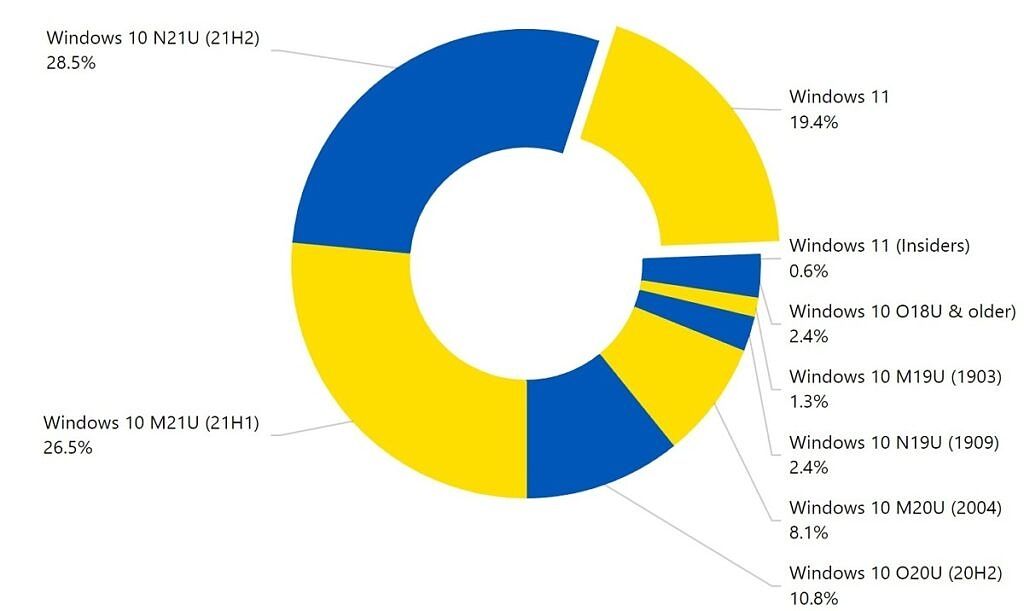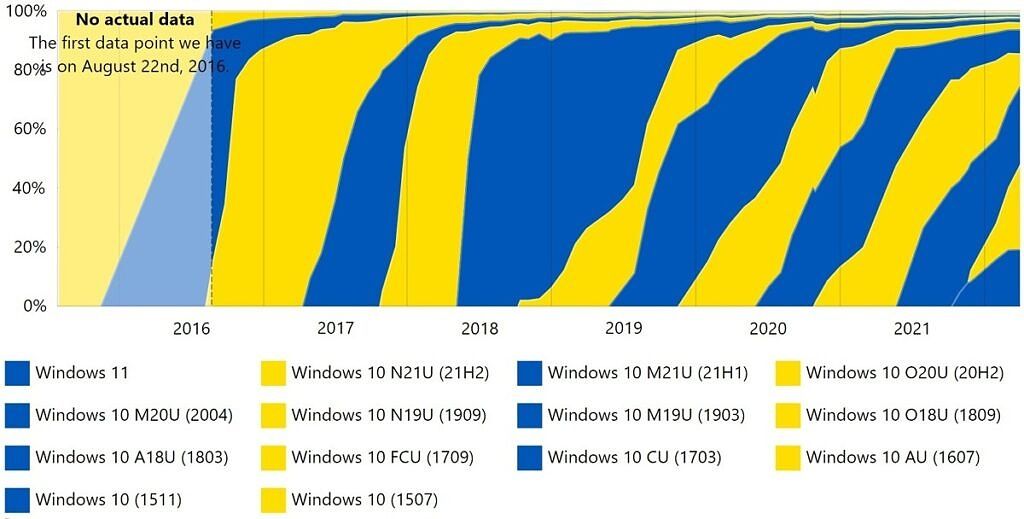After rising fairly quickly in its first few months, Windows 11 growth seems to have stalled in March, according to the latest AdDuplex survey. The latest charts show that Windows 11 usage share has remained nearly identical compared to February. However, Windows 10 version 21H2 has seen some growth and it became the most used version of Windows in March.
As usual, this data is collected from roughly 5,000 apps that are using the AdDuplex SDK v.2 for their advertising framework. While this month's results don't come with a sample size, but it's usually been around 60,000 PCs. That's a small sample size all things considered, but it does allow us to observe the trend in growth and decline of specific Windows versions. The results were collected on March 29.
As mentioned above, Windows 11 barely saw any growth in March AdDuplex survey, accounting for 19.4% of Windows users, a very minor increase from 19.3% in February. It managed to hold on to third place, with Windows 10 version 21H2 and 21H1 leading the pack. In March, Windows 10 version 21H2 saw a significant rise, now reaching 28.5% of Windows PCs (up from 21% in February), and taking the top spot among all the versions included in the survey. With that, Windows 10 version 21H1 fell to second place, with a usage share of 26.5% (down from 27.5%).
Most of the growth for Windows 10 version 21H2 came from version 20H2, and there's a very good reason for that. Windows 10 version 20H2 will stop being supported in May, and that means Microsoft is starting to automatically update those PCs in order to keep them in the support cycle. This is a very minor update, so if you're still running version 20H2, you may want to consider upgrading sooner rather than later, as you could be missing out on important fixes.
Along with the stats for March, AdDuplex also updated its historic data for usage share growth. As you can see, Windows 11 growth has completely flatlined, which is something we haven't seen in a few years. However, taking the collective adoption of Windows 11 and Windows 10 version 21H2, which were released around the same time, users are still jumping to the newest releases at a relatively rapid pace.
If you're wondering why Windows 11 isn't growing, there are a few reasons that could explain that. For one thing, Windows 11 has minimum requirements that many Windows 10 PCs don't meet, so there are going to be many users left behind in the transition. Additionally, even for PCs that are supported, Windows 11 is an optional update, so it's bound to be adopted more slowly. Windows 10 version 21H2 is mandatory for PCs that are running out of support, so it's bound to grow more quickly.
A few weeks ago, Microsoft said it was accelerating the Windows 11 rollout due to the positive feedback it had received, so it's not like users consider Windows 11 a bad update. Many new Windows 11 devices are hitting the market in the coming months, so it's likely adoption will also ramp up that much more. Keep in mind the past year has also been unique in the sense that Intel didn't release new laptop processors in the second half of 2021, so there wasn't as much exciting hardware for users to upgrade to.
Microsoft is set to unveil new features for Windows 11 at an event on April 5th, so maybe we'll be hearing about more reasons to upgrade soon.
Source: AdDuplex



